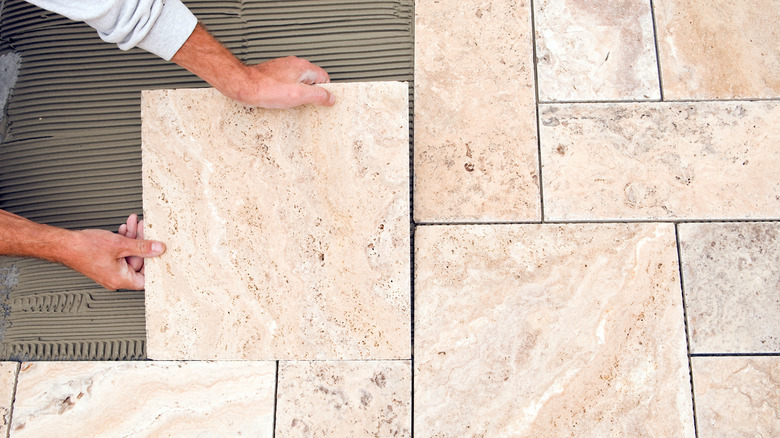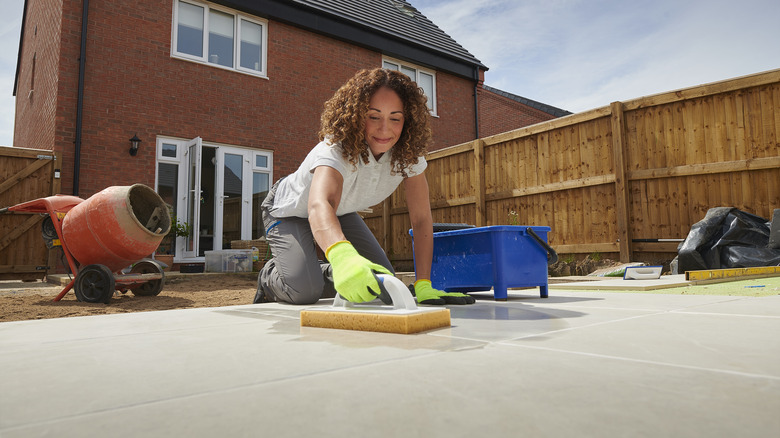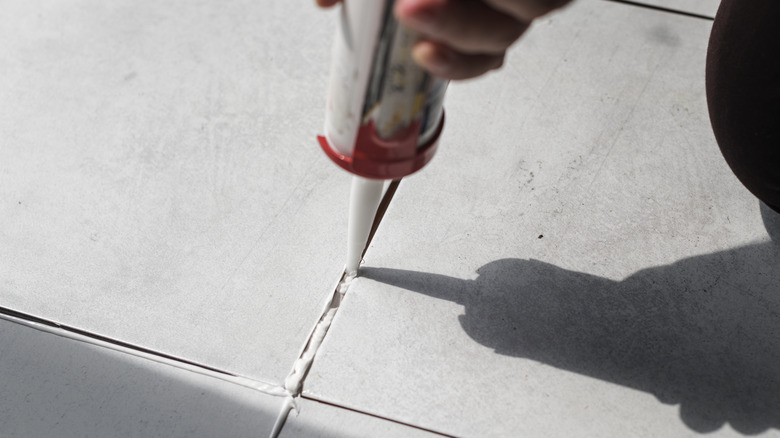Do You Need To Use Grout When Installing Tile Floors?
If you're looking to DIY your floors, one of the biggest considerations is the type of flooring to install. Tile is an excellent choice, as it's versatile and comes in countless styles and color options. It also requires you to learn how to grout your tile properly, completing a seamless floor installation with smooth lines. However, you might be tempted to skip the necessary step of grouting your brand-new floors. This is never a good idea for several reasons. For starters, worn or cracked grout can lead to a fall, and a floor without grout can do just as much damage, if not more. Additionally, grout not only preserves the integrity of your tile but also gives your floors a cohesive, sleek appearance.
There are a few reasons why people consider skipping grout. For one, it can stain, so you must clean it frequently. However, you can always choose a dark-colored grout as a workaround. You risk damaging your floors over time when you omit grout from your tile project. Tiles can shift and rub together, cracking and chipping. You'll then have to replace these tiles, wasting time and money. Fortunately, grout works to strengthen tiles and stop them from moving around. Additionally, if someone steps on a loose tile — especially a wet one — you risk a slip-and-fall accident, so always add grout when installing floors.
Why you need grout
Grout puts the finishing touches on any tile work project but also serves a structural purpose. In addition to reinforcing your floor, it fills in any visible gaps. Someone could easily snag their toe and trip, especially if walking around your home barefoot. If you place your tiles close together, working to reduce gaps, your tiles risk chipping as they shift and grind into one another, leading to costly replacements. Considering you could pay $20 per square foot of tile, taking all measures to preserve your floor is advantageous. Replacing tiles is no small task. You must wear a dust mask, protective eyewear, and gloves, but grouting the area can prevent these unnecessary steps down the road.
Grouting your floors is an excellent safety precaution, but it also serves another purpose: it works to keep your floors clean. Hard-to-remove dirt and grime can settle in the gaps between floor tiles without grout. This means you'll spend more time come cleaning day sloughing away hard-to-reach dirt. Convenience and aesthetics aside, grout prevents moisture from forming between your tiles. Water can penetrate these gaps, causing humidity and mold or mildew problems. Since mold can cause health issues, avoid it whenever possible, and don't skip the grout when installing tile floors.
Grout options and maintenance
One of the offputting features of grout is that you often need to seal it. This is especially true for areas with a lot of foot traffic or water. However, you can use urethane grout as an alternative, as it doesn't require sealing. Remember that this type of grout isn't the best to use in areas prone to moisture and water. Acrylic grout, however, works well on tiles that encounter water and can resist mold and mildew growth. It keeps its color and doesn't require sealing, as it's not cement-based.
If you're still hesitant to grout your floors, remember that properly maintained grout can last you upwards of 20 years, so it's not like you'll have to redo this process frequently. You need to routinely clean your grout, as this can stop mold and mildew from forming. When left unchecked, these spores can erode and damage your grout. The easiest ways to clean grout can be as simple as steam cleaning it or applying some vinegar, which means you can safely and affordably keep your brand-new DIY tile project looking its best for years to come.


